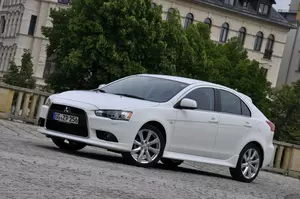
| Vehicle | Curb weight | Difference from world's smallest | Weight to power ratio | 0—60 mph acceleration ratio | Consumption ratio |
|---|---|---|---|---|---|
| 1.8 |
1375 kg / 3032 lbs |
950 kg (2095 lbs) heavier | 10 kg to 1 hp | 122 kg/s (269 lbs/s) |
208 kg/L (459 lbs/L) |
| 1.6 |
1300 kg / 2867 lbs |
875 kg (1930 lbs) heavier | 11 kg to 1 hp | 124 kg/s (273 lbs/s) |
236 kg/L (520 lbs/L) |
| Vehicle | 1.8 |
|---|---|
| Curb weight |
1375 kg / 3032 lbs |
| Difference from world's smallest | 950 kg (950 lbs) heavier |
| Weight to power ratio | 10 kg to 1 hp |
| 0—60 mph acceleration ratio | 122 kg/s (269 lbs/s) |
| Consumption ratio |
208 kg/L (459 lbs/L) |
| Vehicle | 1.6 |
| Curb weight |
1300 kg / 2867 lbs |
| Difference from world's smallest | 875 kg (875 lbs) heavier |
| Weight to power ratio | 11 kg to 1 hp |
| 0—60 mph acceleration ratio | 124 kg/s (273 lbs/s) |
| Consumption ratio |
236 kg/L (520 lbs/L) |
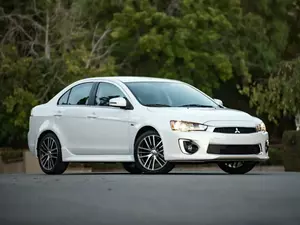
| Vehicle | Curb weight | Difference from world's smallest | Weight to power ratio | 0—60 mph acceleration ratio | Consumption ratio |
|---|---|---|---|---|---|
| 2.0 |
1310 kg / 2889 lbs |
885 kg (1952 lbs) heavier | 9 kg to 1 hp | - |
156 kg/L (344 lbs/L) |
| 2.4 |
1425 kg / 3142 lbs |
1000 kg (2205 lbs) heavier | 8 kg to 1 hp | - |
158 kg/L (348 lbs/L) |
| 1.6 MIVEC |
1335 kg / 2944 lbs |
910 kg (2007 lbs) heavier | 11 kg to 1 hp | 131 kg/s (289 lbs/s) |
243 kg/L (536 lbs/L) |
| Vehicle | 2.0 |
|---|---|
| Curb weight |
1310 kg / 2889 lbs |
| Difference from world's smallest | 885 kg (885 lbs) heavier |
| Weight to power ratio | 9 kg to 1 hp |
| 0—60 mph acceleration ratio | - |
| Consumption ratio |
156 kg/L (344 lbs/L) |
| Vehicle | 2.4 |
| Curb weight |
1425 kg / 3142 lbs |
| Difference from world's smallest | 1000 kg (1000 lbs) heavier |
| Weight to power ratio | 8 kg to 1 hp |
| 0—60 mph acceleration ratio | - |
| Consumption ratio |
158 kg/L (348 lbs/L) |
| Vehicle | 1.6 MIVEC |
| Curb weight |
1335 kg / 2944 lbs |
| Difference from world's smallest | 910 kg (910 lbs) heavier |
| Weight to power ratio | 11 kg to 1 hp |
| 0—60 mph acceleration ratio | 131 kg/s (289 lbs/s) |
| Consumption ratio |
243 kg/L (536 lbs/L) |
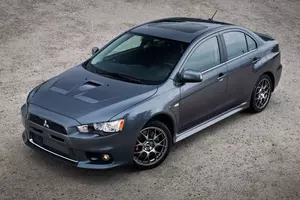
| Vehicle | Curb weight | Difference from world's smallest | Weight to power ratio | 0—60 mph acceleration ratio | Consumption ratio |
|---|---|---|---|---|---|
| 1.6 MIVEC |
1260 kg / 2778 lbs |
835 kg (1841 lbs) heavier | 11 kg to 1 hp | 124 kg/s (273 lbs/s) |
221 kg/L (487 lbs/L) |
| 1.5i |
1290 kg / 2844 lbs |
865 kg (1907 lbs) heavier | 12 kg to 1 hp | 117 kg/s (258 lbs/s) |
202 kg/L (445 lbs/L) |
| 1.8i |
1290 kg / 2844 lbs |
865 kg (1907 lbs) heavier | 9 kg to 1 hp | 139 kg/s (306 lbs/s) |
168 kg/L (370 lbs/L) |
| 2.0 DI-D |
1365 kg / 3010 lbs |
940 kg (2073 lbs) heavier | 10 kg to 1 hp | 150 kg/s (331 lbs/s) |
224 kg/L (494 lbs/L) |
| Ralliart 2.0 |
1365 kg / 3010 lbs |
940 kg (2073 lbs) heavier | 6 kg to 1 hp | 204 kg/s (450 lbs/s) |
163 kg/L (359 lbs/L) |
| 2.0i |
1365 kg / 3010 lbs |
940 kg (2073 lbs) heavier | 9 kg to 1 hp | 137 kg/s (302 lbs/s) |
163 kg/L (359 lbs/L) |
| Evolution 2.0 |
1590 kg / 3506 lbs |
1165 kg (2569 lbs) heavier | 5 kg to 1 hp | - | - |
| Vehicle | 1.6 MIVEC |
|---|---|
| Curb weight |
1260 kg / 2778 lbs |
| Difference from world's smallest | 835 kg (835 lbs) heavier |
| Weight to power ratio | 11 kg to 1 hp |
| 0—60 mph acceleration ratio | 124 kg/s (273 lbs/s) |
| Consumption ratio |
221 kg/L (487 lbs/L) |
| Vehicle | 1.5i |
| Curb weight |
1290 kg / 2844 lbs |
| Difference from world's smallest | 865 kg (865 lbs) heavier |
| Weight to power ratio | 12 kg to 1 hp |
| 0—60 mph acceleration ratio | 117 kg/s (258 lbs/s) |
| Consumption ratio |
202 kg/L (445 lbs/L) |
| Vehicle | 1.8i |
| Curb weight |
1290 kg / 2844 lbs |
| Difference from world's smallest | 865 kg (865 lbs) heavier |
| Weight to power ratio | 9 kg to 1 hp |
| 0—60 mph acceleration ratio | 139 kg/s (306 lbs/s) |
| Consumption ratio |
168 kg/L (370 lbs/L) |
| Vehicle | 2.0 DI-D |
| Curb weight |
1365 kg / 3010 lbs |
| Difference from world's smallest | 940 kg (940 lbs) heavier |
| Weight to power ratio | 10 kg to 1 hp |
| 0—60 mph acceleration ratio | 150 kg/s (331 lbs/s) |
| Consumption ratio |
224 kg/L (494 lbs/L) |
| Vehicle | Ralliart 2.0 |
| Curb weight |
1365 kg / 3010 lbs |
| Difference from world's smallest | 940 kg (940 lbs) heavier |
| Weight to power ratio | 6 kg to 1 hp |
| 0—60 mph acceleration ratio | 204 kg/s (450 lbs/s) |
| Consumption ratio |
163 kg/L (359 lbs/L) |
| Vehicle | 2.0i |
| Curb weight |
1365 kg / 3010 lbs |
| Difference from world's smallest | 940 kg (940 lbs) heavier |
| Weight to power ratio | 9 kg to 1 hp |
| 0—60 mph acceleration ratio | 137 kg/s (302 lbs/s) |
| Consumption ratio |
163 kg/L (359 lbs/L) |
| Vehicle | Evolution 2.0 |
| Curb weight |
1590 kg / 3506 lbs |
| Difference from world's smallest | 1165 kg (1165 lbs) heavier |
| Weight to power ratio | 5 kg to 1 hp |
| 0—60 mph acceleration ratio | - |
| Consumption ratio | - |
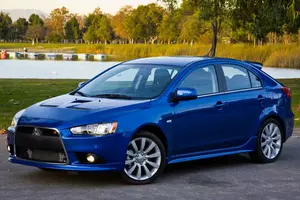
| Vehicle | Curb weight | Difference from world's smallest | Weight to power ratio | 0—60 mph acceleration ratio | Consumption ratio |
|---|---|---|---|---|---|
| 1.8 MPI |
1430 kg / 3153 lbs |
1005 kg (2216 lbs) heavier | 10 kg to 1 hp | - |
172 kg/L (379 lbs/L) |
| Vehicle | 1.8 MPI |
|---|---|
| Curb weight |
1430 kg / 3153 lbs |
| Difference from world's smallest | 1005 kg (1005 lbs) heavier |
| Weight to power ratio | 10 kg to 1 hp |
| 0—60 mph acceleration ratio | - |
| Consumption ratio |
172 kg/L (379 lbs/L) |
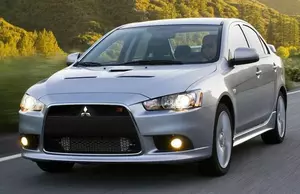
| Vehicle | Curb weight | Difference from world's smallest | Weight to power ratio | 0—60 mph acceleration ratio | Consumption ratio |
|---|---|---|---|---|---|
| 1.6i 16V |
1185 kg / 2613 lbs |
760 kg (1676 lbs) heavier | 12 kg to 1 hp | 106 kg/s (234 lbs/s) |
177 kg/L (390 lbs/L) |
| 1.3i 16V |
1165 kg / 2569 lbs |
740 kg (1632 lbs) heavier | 14 kg to 1 hp | 90 kg/s (198 lbs/s) |
179 kg/L (395 lbs/L) |
| Sport 2.0i 16V |
1270 kg / 2800 lbs |
845 kg (1863 lbs) heavier | 9 kg to 1 hp | 138 kg/s (304 lbs/s) |
151 kg/L (333 lbs/L) |
| Evolution 2.0 |
1465 kg / 3230 lbs |
1040 kg (2293 lbs) heavier | 5 kg to 1 hp | 271 kg/s (598 lbs/s) |
138 kg/L (304 lbs/L) |
| Vehicle | 1.6i 16V |
|---|---|
| Curb weight |
1185 kg / 2613 lbs |
| Difference from world's smallest | 760 kg (760 lbs) heavier |
| Weight to power ratio | 12 kg to 1 hp |
| 0—60 mph acceleration ratio | 106 kg/s (234 lbs/s) |
| Consumption ratio |
177 kg/L (390 lbs/L) |
| Vehicle | 1.3i 16V |
| Curb weight |
1165 kg / 2569 lbs |
| Difference from world's smallest | 740 kg (740 lbs) heavier |
| Weight to power ratio | 14 kg to 1 hp |
| 0—60 mph acceleration ratio | 90 kg/s (198 lbs/s) |
| Consumption ratio |
179 kg/L (395 lbs/L) |
| Vehicle | Sport 2.0i 16V |
| Curb weight |
1270 kg / 2800 lbs |
| Difference from world's smallest | 845 kg (845 lbs) heavier |
| Weight to power ratio | 9 kg to 1 hp |
| 0—60 mph acceleration ratio | 138 kg/s (304 lbs/s) |
| Consumption ratio |
151 kg/L (333 lbs/L) |
| Vehicle | Evolution 2.0 |
| Curb weight |
1465 kg / 3230 lbs |
| Difference from world's smallest | 1040 kg (1040 lbs) heavier |
| Weight to power ratio | 5 kg to 1 hp |
| 0—60 mph acceleration ratio | 271 kg/s (598 lbs/s) |
| Consumption ratio |
138 kg/L (304 lbs/L) |
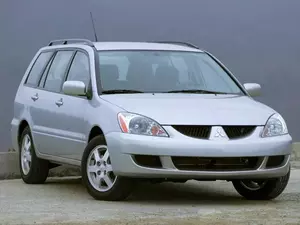
| Vehicle | Curb weight | Difference from world's smallest | Weight to power ratio | 0—60 mph acceleration ratio | Consumption ratio |
|---|---|---|---|---|---|
| 1.6 i 16V |
1360 kg / 2999 lbs |
935 kg (2062 lbs) heavier | 14 kg to 1 hp | 113 kg/s (249 lbs/s) |
194 kg/L (428 lbs/L) |
| Sport 1.6i 16V |
1275 kg / 2811 lbs |
850 kg (1874 lbs) heavier | 13 kg to 1 hp | 106 kg/s (234 lbs/s) |
182 kg/L (401 lbs/L) |
| Sport 2.0i 16V |
1320 kg / 2911 lbs |
895 kg (1974 lbs) heavier | 10 kg to 1 hp | 139 kg/s (306 lbs/s) |
153 kg/L (337 lbs/L) |
| Vehicle | 1.6 i 16V |
|---|---|
| Curb weight |
1360 kg / 2999 lbs |
| Difference from world's smallest | 935 kg (935 lbs) heavier |
| Weight to power ratio | 14 kg to 1 hp |
| 0—60 mph acceleration ratio | 113 kg/s (249 lbs/s) |
| Consumption ratio |
194 kg/L (428 lbs/L) |
| Vehicle | Sport 1.6i 16V |
| Curb weight |
1275 kg / 2811 lbs |
| Difference from world's smallest | 850 kg (850 lbs) heavier |
| Weight to power ratio | 13 kg to 1 hp |
| 0—60 mph acceleration ratio | 106 kg/s (234 lbs/s) |
| Consumption ratio |
182 kg/L (401 lbs/L) |
| Vehicle | Sport 2.0i 16V |
| Curb weight |
1320 kg / 2911 lbs |
| Difference from world's smallest | 895 kg (895 lbs) heavier |
| Weight to power ratio | 10 kg to 1 hp |
| 0—60 mph acceleration ratio | 139 kg/s (306 lbs/s) |
| Consumption ratio |
153 kg/L (337 lbs/L) |
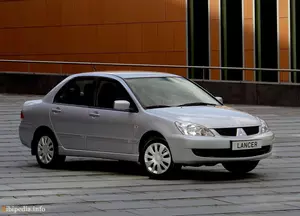
| Vehicle | Curb weight | Difference from world's smallest | Weight to power ratio | 0—60 mph acceleration ratio | Consumption ratio |
|---|---|---|---|---|---|
| Evolution 2.0 T |
1320 kg / 2911 lbs |
895 kg (1974 lbs) heavier | 5 kg to 1 hp | 236 kg/s (520 lbs/s) |
121 kg/L (267 lbs/L) |
| Evolution 2.0i 16V |
1410 kg / 3109 lbs |
985 kg (2172 lbs) heavier | 5 kg to 1 hp | 243 kg/s (536 lbs/s) |
129 kg/L (284 lbs/L) |
| Vehicle | Evolution 2.0 T |
|---|---|
| Curb weight |
1320 kg / 2911 lbs |
| Difference from world's smallest | 895 kg (895 lbs) heavier |
| Weight to power ratio | 5 kg to 1 hp |
| 0—60 mph acceleration ratio | 236 kg/s (520 lbs/s) |
| Consumption ratio |
121 kg/L (267 lbs/L) |
| Vehicle | Evolution 2.0i 16V |
| Curb weight |
1410 kg / 3109 lbs |
| Difference from world's smallest | 985 kg (985 lbs) heavier |
| Weight to power ratio | 5 kg to 1 hp |
| 0—60 mph acceleration ratio | 243 kg/s (536 lbs/s) |
| Consumption ratio |
129 kg/L (284 lbs/L) |

| Vehicle | Curb weight | Difference from world's smallest | Weight to power ratio | 0—60 mph acceleration ratio | Consumption ratio |
|---|---|---|---|---|---|
| Evolution 2.0 T |
1380 kg / 3043 lbs |
955 kg (2106 lbs) heavier | 5 kg to 1 hp | 238 kg/s (525 lbs/s) |
127 kg/L (280 lbs/L) |
| Vehicle | Evolution 2.0 T |
|---|---|
| Curb weight |
1380 kg / 3043 lbs |
| Difference from world's smallest | 955 kg (955 lbs) heavier |
| Weight to power ratio | 5 kg to 1 hp |
| 0—60 mph acceleration ratio | 238 kg/s (525 lbs/s) |
| Consumption ratio |
127 kg/L (280 lbs/L) |

| Vehicle | Curb weight | Difference from world's smallest | Weight to power ratio | 0—60 mph acceleration ratio | Consumption ratio |
|---|---|---|---|---|---|
| 1.3 12V GL,GLX |
995 kg / 2194 lbs |
570 kg (1257 lbs) heavier | 13 kg to 1 hp | 84 kg/s (185 lbs/s) | - |
| Evolution 2.0 T |
1280 kg / 2822 lbs |
855 kg (1885 lbs) heavier | 5 kg to 1 hp | 272 kg/s (600 lbs/s) | - |
| 1.5 |
1020 kg / 2249 lbs |
595 kg (1312 lbs) heavier | 9 kg to 1 hp | - | - |
| 1.8 GSR |
1260 kg / 2778 lbs |
835 kg (1841 lbs) heavier | 6 kg to 1 hp | - | - |
| Vehicle | 1.3 12V GL,GLX |
|---|---|
| Curb weight |
995 kg / 2194 lbs |
| Difference from world's smallest | 570 kg (570 lbs) heavier |
| Weight to power ratio | 13 kg to 1 hp |
| 0—60 mph acceleration ratio | 84 kg/s (185 lbs/s) |
| Consumption ratio | - |
| Vehicle | Evolution 2.0 T |
| Curb weight |
1280 kg / 2822 lbs |
| Difference from world's smallest | 855 kg (855 lbs) heavier |
| Weight to power ratio | 5 kg to 1 hp |
| 0—60 mph acceleration ratio | 272 kg/s (600 lbs/s) |
| Consumption ratio | - |
| Vehicle | 1.5 |
| Curb weight |
1020 kg / 2249 lbs |
| Difference from world's smallest | 595 kg (595 lbs) heavier |
| Weight to power ratio | 9 kg to 1 hp |
| 0—60 mph acceleration ratio | - |
| Consumption ratio | - |
| Vehicle | 1.8 GSR |
| Curb weight |
1260 kg / 2778 lbs |
| Difference from world's smallest | 835 kg (835 lbs) heavier |
| Weight to power ratio | 6 kg to 1 hp |
| 0—60 mph acceleration ratio | - |
| Consumption ratio | - |
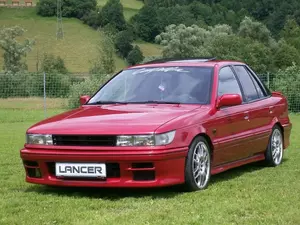
| Vehicle | Curb weight | Difference from world's smallest | Weight to power ratio | 0—60 mph acceleration ratio | Consumption ratio |
|---|---|---|---|---|---|
| 1.6 16V |
1020 kg / 2249 lbs |
595 kg (1312 lbs) heavier | 9 kg to 1 hp | 110 kg/s (243 lbs/s) |
142 kg/L (313 lbs/L) |
| 1.5 CB3A |
940 kg / 2073 lbs |
515 kg (1136 lbs) heavier | 8 kg to 1 hp | 79 kg/s (174 lbs/s) | - |
| Evolution 2.0 |
1260 kg / 2778 lbs |
835 kg (1841 lbs) heavier | 5 kg to 1 hp | - | - |
| 1.3 |
940 kg / 2073 lbs |
515 kg (1136 lbs) heavier | 13 kg to 1 hp | 79 kg/s (174 lbs/s) |
136 kg/L (300 lbs/L) |
| 2.0 Diesel |
1070 kg / 2359 lbs |
645 kg (1422 lbs) heavier | 16 kg to 1 hp | 69 kg/s (152 lbs/s) |
175 kg/L (386 lbs/L) |
| Vehicle | 1.6 16V |
|---|---|
| Curb weight |
1020 kg / 2249 lbs |
| Difference from world's smallest | 595 kg (595 lbs) heavier |
| Weight to power ratio | 9 kg to 1 hp |
| 0—60 mph acceleration ratio | 110 kg/s (243 lbs/s) |
| Consumption ratio |
142 kg/L (313 lbs/L) |
| Vehicle | 1.5 CB3A |
| Curb weight |
940 kg / 2073 lbs |
| Difference from world's smallest | 515 kg (515 lbs) heavier |
| Weight to power ratio | 8 kg to 1 hp |
| 0—60 mph acceleration ratio | 79 kg/s (174 lbs/s) |
| Consumption ratio | - |
| Vehicle | Evolution 2.0 |
| Curb weight |
1260 kg / 2778 lbs |
| Difference from world's smallest | 835 kg (835 lbs) heavier |
| Weight to power ratio | 5 kg to 1 hp |
| 0—60 mph acceleration ratio | - |
| Consumption ratio | - |
| Vehicle | 1.3 |
| Curb weight |
940 kg / 2073 lbs |
| Difference from world's smallest | 515 kg (515 lbs) heavier |
| Weight to power ratio | 13 kg to 1 hp |
| 0—60 mph acceleration ratio | 79 kg/s (174 lbs/s) |
| Consumption ratio |
136 kg/L (300 lbs/L) |
| Vehicle | 2.0 Diesel |
| Curb weight |
1070 kg / 2359 lbs |
| Difference from world's smallest | 645 kg (645 lbs) heavier |
| Weight to power ratio | 16 kg to 1 hp |
| 0—60 mph acceleration ratio | 69 kg/s (152 lbs/s) |
| Consumption ratio |
175 kg/L (386 lbs/L) |

| Vehicle | Curb weight | Difference from world's smallest | Weight to power ratio | 0—60 mph acceleration ratio | Consumption ratio |
|---|---|---|---|---|---|
| 1.6 16V |
1210 kg / 2668 lbs |
785 kg (1731 lbs) heavier | 11 kg to 1 hp | 111 kg/s (245 lbs/s) |
148 kg/L (326 lbs/L) |
| 2.0 D |
1128 kg / 2487 lbs |
703 kg (1550 lbs) heavier | 17 kg to 1 hp | 73 kg/s (161 lbs/s) |
185 kg/L (408 lbs/L) |
| Vehicle | 1.6 16V |
|---|---|
| Curb weight |
1210 kg / 2668 lbs |
| Difference from world's smallest | 785 kg (785 lbs) heavier |
| Weight to power ratio | 11 kg to 1 hp |
| 0—60 mph acceleration ratio | 111 kg/s (245 lbs/s) |
| Consumption ratio |
148 kg/L (326 lbs/L) |
| Vehicle | 2.0 D |
| Curb weight |
1128 kg / 2487 lbs |
| Difference from world's smallest | 703 kg (703 lbs) heavier |
| Weight to power ratio | 17 kg to 1 hp |
| 0—60 mph acceleration ratio | 73 kg/s (161 lbs/s) |
| Consumption ratio |
185 kg/L (408 lbs/L) |
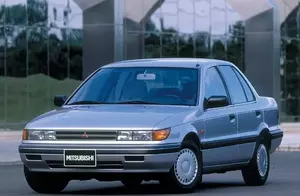
| Vehicle | Curb weight | Difference from world's smallest | Weight to power ratio | 0—60 mph acceleration ratio | Consumption ratio |
|---|---|---|---|---|---|
| 1.3 12V |
880 kg / 1940 lbs |
455 kg (1003 lbs) heavier | 12 kg to 1 hp | - | - |
| 1.5 12V |
1025 kg / 2260 lbs |
600 kg (1323 lbs) heavier | 11 kg to 1 hp | 92 kg/s (203 lbs/s) |
146 kg/L (322 lbs/L) |
| 1.6 |
1020 kg / 2249 lbs |
595 kg (1312 lbs) heavier | 6 kg to 1 hp | - | - |
| 1.8 |
1135 kg / 2503 lbs |
710 kg (1566 lbs) heavier | 12 kg to 1 hp | 95 kg/s (209 lbs/s) |
122 kg/L (269 lbs/L) |
| GTi 1.8 16V |
1020 kg / 2249 lbs |
595 kg (1312 lbs) heavier | 8 kg to 1 hp | 129 kg/s (284 lbs/s) |
126 kg/L (278 lbs/L) |
| Vehicle | 1.3 12V |
|---|---|
| Curb weight |
880 kg / 1940 lbs |
| Difference from world's smallest | 455 kg (455 lbs) heavier |
| Weight to power ratio | 12 kg to 1 hp |
| 0—60 mph acceleration ratio | - |
| Consumption ratio | - |
| Vehicle | 1.5 12V |
| Curb weight |
1025 kg / 2260 lbs |
| Difference from world's smallest | 600 kg (600 lbs) heavier |
| Weight to power ratio | 11 kg to 1 hp |
| 0—60 mph acceleration ratio | 92 kg/s (203 lbs/s) |
| Consumption ratio |
146 kg/L (322 lbs/L) |
| Vehicle | 1.6 |
| Curb weight |
1020 kg / 2249 lbs |
| Difference from world's smallest | 595 kg (595 lbs) heavier |
| Weight to power ratio | 6 kg to 1 hp |
| 0—60 mph acceleration ratio | - |
| Consumption ratio | - |
| Vehicle | 1.8 |
| Curb weight |
1135 kg / 2503 lbs |
| Difference from world's smallest | 710 kg (710 lbs) heavier |
| Weight to power ratio | 12 kg to 1 hp |
| 0—60 mph acceleration ratio | 95 kg/s (209 lbs/s) |
| Consumption ratio |
122 kg/L (269 lbs/L) |
| Vehicle | GTi 1.8 16V |
| Curb weight |
1020 kg / 2249 lbs |
| Difference from world's smallest | 595 kg (595 lbs) heavier |
| Weight to power ratio | 8 kg to 1 hp |
| 0—60 mph acceleration ratio | 129 kg/s (284 lbs/s) |
| Consumption ratio |
126 kg/L (278 lbs/L) |
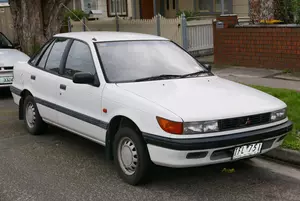
| Vehicle | Curb weight | Difference from world's smallest | Weight to power ratio | 0—60 mph acceleration ratio | Consumption ratio |
|---|---|---|---|---|---|
| 1.3 12V |
920 kg / 2029 lbs |
495 kg (1092 lbs) heavier | 12 kg to 1 hp | - | - |
| 1.6 16V |
1050 kg / 2315 lbs |
625 kg (1378 lbs) heavier | 9 kg to 1 hp | 113 kg/s (249 lbs/s) | - |
| 1.5 |
1105 kg / 2437 lbs |
680 kg (1500 lbs) heavier | 13 kg to 1 hp | - | - |
| 1.5 12V |
1105 kg / 2437 lbs |
680 kg (1500 lbs) heavier | 12 kg to 1 hp | 100 kg/s (221 lbs/s) |
158 kg/L (348 lbs/L) |
| 1.8 Diesel |
1030 kg / 2271 lbs |
605 kg (1334 lbs) heavier | 17 kg to 1 hp | - |
156 kg/L (344 lbs/L) |
| 1.8 |
1060 kg / 2337 lbs |
635 kg (1400 lbs) heavier | 8 kg to 1 hp | 141 kg/s (311 lbs/s) |
131 kg/L (289 lbs/L) |
| Vehicle | 1.3 12V |
|---|---|
| Curb weight |
920 kg / 2029 lbs |
| Difference from world's smallest | 495 kg (495 lbs) heavier |
| Weight to power ratio | 12 kg to 1 hp |
| 0—60 mph acceleration ratio | - |
| Consumption ratio | - |
| Vehicle | 1.6 16V |
| Curb weight |
1050 kg / 2315 lbs |
| Difference from world's smallest | 625 kg (625 lbs) heavier |
| Weight to power ratio | 9 kg to 1 hp |
| 0—60 mph acceleration ratio | 113 kg/s (249 lbs/s) |
| Consumption ratio | - |
| Vehicle | 1.5 |
| Curb weight |
1105 kg / 2437 lbs |
| Difference from world's smallest | 680 kg (680 lbs) heavier |
| Weight to power ratio | 13 kg to 1 hp |
| 0—60 mph acceleration ratio | - |
| Consumption ratio | - |
| Vehicle | 1.5 12V |
| Curb weight |
1105 kg / 2437 lbs |
| Difference from world's smallest | 680 kg (680 lbs) heavier |
| Weight to power ratio | 12 kg to 1 hp |
| 0—60 mph acceleration ratio | 100 kg/s (221 lbs/s) |
| Consumption ratio |
158 kg/L (348 lbs/L) |
| Vehicle | 1.8 Diesel |
| Curb weight |
1030 kg / 2271 lbs |
| Difference from world's smallest | 605 kg (605 lbs) heavier |
| Weight to power ratio | 17 kg to 1 hp |
| 0—60 mph acceleration ratio | - |
| Consumption ratio |
156 kg/L (344 lbs/L) |
| Vehicle | 1.8 |
| Curb weight |
1060 kg / 2337 lbs |
| Difference from world's smallest | 635 kg (635 lbs) heavier |
| Weight to power ratio | 8 kg to 1 hp |
| 0—60 mph acceleration ratio | 141 kg/s (311 lbs/s) |
| Consumption ratio |
131 kg/L (289 lbs/L) |

| Vehicle | Curb weight | Difference from world's smallest | Weight to power ratio | 0—60 mph acceleration ratio | Consumption ratio |
|---|---|---|---|---|---|
| 1.5 |
900 kg / 1985 lbs |
475 kg (1048 lbs) heavier | 12 kg to 1 hp | - | - |
| 1.8 |
1160 kg / 2558 lbs |
735 kg (1621 lbs) heavier | 12 kg to 1 hp | - | - |
| 1.5 12V |
900 kg / 1985 lbs |
475 kg (1048 lbs) heavier | 10 kg to 1 hp | - | - |
| 1.8 D |
1000 kg / 2205 lbs |
575 kg (1268 lbs) heavier | 17 kg to 1 hp | 68 kg/s (150 lbs/s) |
147 kg/L (324 lbs/L) |
| Vehicle | 1.5 |
|---|---|
| Curb weight |
900 kg / 1985 lbs |
| Difference from world's smallest | 475 kg (475 lbs) heavier |
| Weight to power ratio | 12 kg to 1 hp |
| 0—60 mph acceleration ratio | - |
| Consumption ratio | - |
| Vehicle | 1.8 |
| Curb weight |
1160 kg / 2558 lbs |
| Difference from world's smallest | 735 kg (735 lbs) heavier |
| Weight to power ratio | 12 kg to 1 hp |
| 0—60 mph acceleration ratio | - |
| Consumption ratio | - |
| Vehicle | 1.5 12V |
| Curb weight |
900 kg / 1985 lbs |
| Difference from world's smallest | 475 kg (475 lbs) heavier |
| Weight to power ratio | 10 kg to 1 hp |
| 0—60 mph acceleration ratio | - |
| Consumption ratio | - |
| Vehicle | 1.8 D |
| Curb weight |
1000 kg / 2205 lbs |
| Difference from world's smallest | 575 kg (575 lbs) heavier |
| Weight to power ratio | 17 kg to 1 hp |
| 0—60 mph acceleration ratio | 68 kg/s (150 lbs/s) |
| Consumption ratio |
147 kg/L (324 lbs/L) |